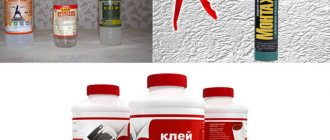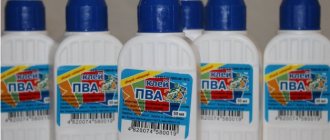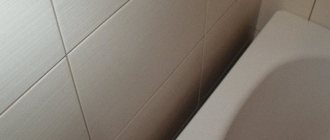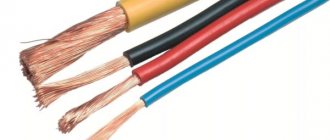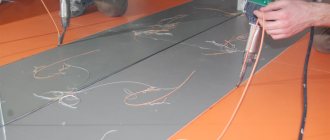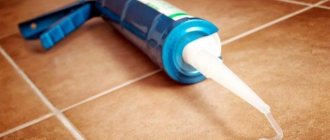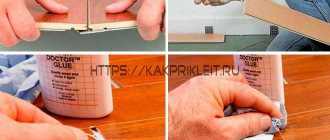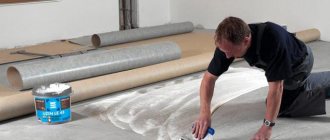The aquarium symbolizes income and success. Businessmen often install it in their offices. Observing the imitation of the underwater world and the life of its inhabitants reduces irritability and gives peace to everyone. That’s why aquariums are installed at home, in business centers and even in stores. But they require quite serious care. This is why you need an aquarium sealant.
- What types of aquarium sealants are there?
- Aquarium glue: basic requirements
- Application technology
- Silicone for aquarium: components and properties
- Gluing an aquarium: instructions
- Useful tips
Aquarium sealant is an indispensable tool for pet fish owners. They can be used to glue the tank together and create relief for the further installation of partitions and other structural elements.
But first you need to understand the wide range of aquarium adhesives. To do this, the article discusses:
- Types of sealing agents.
- Basic rules for their selection.
- Popular brands. Their characteristics and properties.
- Principle of application. Other useful recommendations.
What should aquarium glue be?
Careless handling of the aquarium or various circumstances can lead to damage to the integrity of the container. To seal a hole or hold parts of a tank together, you cannot use regular superglue for the following reasons:
- Conventional adhesive mixture becomes hard after drying, which leads to the formation of kinks or cracks. Therefore, aquarium glue must be flexible in order to stretch.
- Given the enormous pressure exerted by the liquid on the walls of the tank, aquarium glue must be strong and reliable to support the weight.
- Tanks contain live flowers, fish and shellfish, so your aquarium sealant must be safe and non-toxic.
Considering these aspects and choosing which sealant to glue the aquarium with, you should give preference to a proven, elastic and stretchable product.
Instructions and recommendations for use
The joints are sealed as follows:
- Treat the areas where the glue will be applied with a degreasing compound. Dry the surfaces thoroughly.
- Apply masking tape to help achieve an even connection.
- Cut the tube cap at an angle of 45 degrees. The hole must have a diameter corresponding to the width of the joint.
- Begin to squeeze out the sealant, slowly moving the tube from bottom to top. This makes the seam better.
- Level the applied sealant using a spatula or stick moistened with water.
- Remove excess composition before it hardens. Remove the masking tape.
- Leave the tank until the seams are completely dry. Fill the container with water, checking the quality of the connections.
Types of sealants
First, it is important to note: there are many types of aquarium sealants, and they are divided into two broad groups:
- Two-component.
- One-component.
Based on their chemical composition, sealants are divided into:
- Bitumen.
- Thiokol.
- Acrylic.
- Silicone.
Of the above, only aquarium silicone is suitable for fish tanks.
Silicone glue
Silicone sealing mixture used for artificial ponds is briefly called aquarium silicone. The variety has gained great popularity in the aquarium hobby due to its wide range of advantages and benefits.
Before choosing how to glue a crack in a tank, you should find out about the composition of the product used. Aquarium silicone sealant has a complex and rich composition, which includes the following components:
- Rubber and dye.
- Strength multiplier.
- Vulcanizer and adhesive, which ensures strong adhesion of surfaces and drying.
- A plasticizer that gives the product elasticity.
It is important to note that silicone varieties are safe for inhabitants of the underwater world and will not cause any harm to fish, vegetation and shellfish.
What you need to prepare before starting work
To make a fish house with your own hands, you will need a list of materials:
- Silicate glasses.
- Waterproof adhesive sealant and a gun for it.
- Any degreaser (alcohol, gasoline).
- Glass cutter.
- Soft sponge or microfiber cloth.
- Ruler-roulette.
- Painting self-adhesive tape.
- Blade or sharp thin knife.
- Grindstone.
- Glass clamps (homemade wooden or purchased).
Assembly should begin on an unnecessary carpet or fabric that you wouldn’t mind throwing away, because... there is a possibility of glue leaking and small fragments falling off. Glass cutting is carried out wearing protective gloves and a mask, so cutting will be done independently; it makes sense to prepare clothes in advance.
Benefits of silicone
Silicone aquarium sealant has gained respect and popularity in the aquarium hobby due to its many advantages:
- Environmental safety - the mixture contains harmless components that will not cause harm to underwater inhabitants. Also, the adhesive mixture does not release toxic substances into the aquatic environment.
- Reliability and durability - these advantages of silicone varieties have been tested in practice by many aquarists. Seams made with silicone are strong: according to research, a force of 200 kg must be applied to destroy a seam.
- Water Resistant – Of course, silicone tank adhesive is water resistant, so you won’t have to worry about the seams coming apart.
Many fish holders are interested in how long silicone for glass takes to dry. The glue ossifies in 20 minutes, and it takes a day to completely seal. The time may vary from company to company, so you should look at the packaging and instructions before use.
Popular formulations
To glue the aquarium, you should use special compounds that say “Aquarium Sealant”. It is not recommended to use other materials, since it is unknown how the glue will behave. Let's consider several popular brands of materials.
Moment
Silicone one-component sealant for aquariums Moment Germent is one of the popular materials on the market. It is 100% silicone and has high adhesion to glass, metal, many types of wood, ceramics, synthetic rubber, silicone, natural and synthetic fabrics, plastic and painted surfaces.
The material is harmless to living organisms, withstands contact with sea water and is resistant to increased vibration. It is used for sealing various terrariums, aquariums and other glass structures.
KRASS
One-component sealant KRASS is used for aquariums and terrariums. It can also be used on glass cabinets, display cases and seams that are subject to high stress. The composition is suitable for gluing metals and ceramics.
The sealant has good adhesion to glass, painted surfaces and enamel, and is resistant to high loads, detergents, ultraviolet radiation and weathering. It practically does not shrink, and is also waterproof and non-toxic.
DOWSIL
Everyone knows Dow Corning silicone sealants. They are currently produced under the DOWSIL brand. DOWSIL 7093 Sealant is a universal, neutral-curing silicone compound. It has excellent adhesion to glass, metals and other substrates.
The composition is suitable for sealing materials with different coefficients of thermal expansion. At the same time, it forms elastic and very strong connections.
TYTAN
TYTAN sealant is designed for sealing and assembling terrariums and aquariums. It is completely safe for reptiles, fish and plants. In addition to aquariums, the material can be used in industrial glazing, for installing curved and concave industrial glass, installing plastic and metal advertising boxes, sealing cable duct wires, etc.
The sealant withstands prolonged exposure to water, has high adhesion to glass and non-porous surfaces, does not contain solvents, does not flow on vertical surfaces, and is resistant to low and high temperatures. The material forms a strong, durable and flexible seam.
Soudal
Silicone sealant Soudal Silirub AQ – vinegar. During the curing process, it releases acid into the environment. However, after polymerization it is absolutely harmless to animals and can be used to assemble aquariums and terrariums, as well as other glass structures and products.
The material is UV resistant and does not fade. It has high adhesion to many substrates, retains its elasticity for a long time and is absolutely neutral after curing.
Varieties of silicone
Varieties of silicone mixtures are divided into acidic and neutral. The former are distinguished by a characteristic sour smell, and there is a letter “A” on the packaging. Neutral adhesives have no aroma, therefore they are freely used in the aquarium hobby for repairing tanks due to the following qualities:
- Durability, moisture resistance, elasticity and stretchability.
- Retains quality at temperatures from -70C to +70C.
Before gluing a glass aquarium, you should know that the paint is not applied to the dried layer of silicone, but rolled up. In addition, a new layer cannot be applied to the previous one, as it will fall off. When repairing a tank, first clean the old sealant film, and then, having previously degreased the glass, apply a fresh layer.
Direct gluing of the aquarium is carried out in several stages:
- Protect the glass from dirt by covering it with masking tape. Leave a distance from each edge equal to the thickness of the glass. The glass that will be the bottom is also covered.
- All surfaces must be degreased. To do this, wipe them with alcohol or an acetone-containing product. Use a lint-free cloth for this.
- The adhesive seam should be as smooth as possible. You can do it as follows: apply a small amount of silicone to the end. Once it has hardened, cut it off with a blade, leaving a small overhang above the glass. It will help you make an even seam.
How to choose an aquarium sealant?
Before gluing the glass, you should find out what kind of sealant is needed. Which glue should you use - selection criteria:
- Neutral silicone is considered the ideal option for containers with fish, but its cost is higher than that of acidic varieties. You should be prepared for a high price, and do not fall for “profitable” offers from scammers, and do not purchase the mixture “from hand.”
- Expiration date – before use, you need to check the expiration date of the sealant, because even high-quality glue sooner or later loses some of its qualities.
- Colorlessness - for reservoirs it is recommended to use uncolored glue, since the dye in the adhesive mixture can release toxic substances into the aquatic environment.
- The packaging must have a mark indicating that this product is intended for artificial reservoirs.
Brief overview of sealants
On store shelves and Internet sites there is a wide selection of sealants from different companies and companies. The following brands are considered the most popular and in demand:
- Tytan - products are manufactured by a Polish company, supplying goods to more than forty countries. The adhesive mixtures from this manufacturer are durable and harmless to fish and other aquatic inhabitants. The cost of one copy is about 350 rubles.
- Krass – Krass brand sealants are produced in Poland. They are considered an affordable option: the cost of the product does not exceed 200 rubles, and the quality corresponds to the declared one.
- Soudal is a sealing mixture originally from Belgium. Ideal for tank repairs: safe for pets, free of dyes and toxic substances, fits perfectly and holds tightly. The price of this brand does not exceed 350 rubles.
- Domestic manufacturers produce popular sealants: Germent, Henkel. The funds are considered proven and reliable.
Adviсe
Having learned about the types of sealants and properties, before repairing the tank, you should familiarize yourself with the advice of professionals and experienced aquarists:
- If there is excess glue in the aquarium being glued together, the smudges can be easily removed with a rag soaked in a vinegar solution.
- Before repairs, fish and other living creatures are removed from the reservoir. Even if repairs are required at the top of the container, unnecessary movements will frighten and cause stress to your pets.
- When gluing the film, it is useful to know one trick, how to glue the background to the aquarium without bubbles and firmly: it will attach securely if you lubricate the surface with vegetable oil.
- Before applying sealant to the seams, remove the old layer. To do this, use a razor blade.
Aquarium sealant is a tried and true product that has helped fix many tanks, saving owners money. When choosing a silicone adhesive mixture, it is important to pay attention to products that do not contain aggressive and toxic components, and be sure to check the expiration date.
Purpose
In operating aquariums, from time to time cracks, chips, and depressurization of seams appear.
Causes of damage:
- improper operation;
- mechanical impact;
- tough transportation;
- long-term storage under the sun.
Glass is a durable material that can withstand quite a large load, but leaks sometimes occur at the junction of the plates. We have to repair the aquarium: seal joints, glue cracks, or even rebuild the entire structure. This is what aquarium sealant is used for - not household glue, but a special non-toxic product.
Minor repairs are not the only purpose of sealant. You can’t do without it when building an aquarium from scratch. Experienced aquarists prefer to independently create “banks” of fancy silhouettes for specific conditions. In addition, glue is necessary for installing decorations on the walls and bottom of the aquarium.

